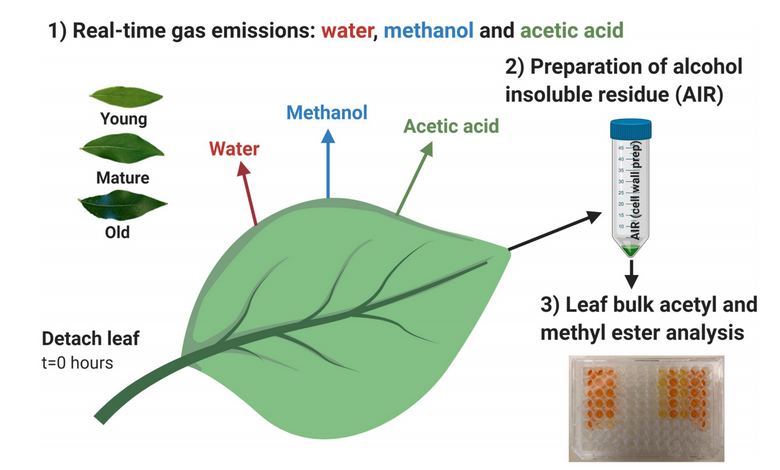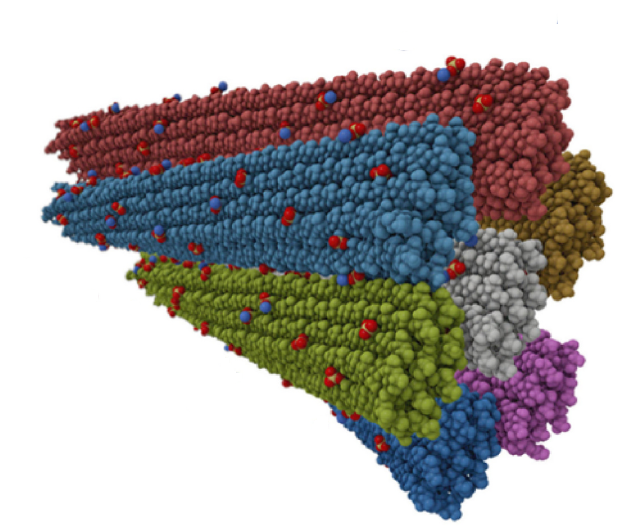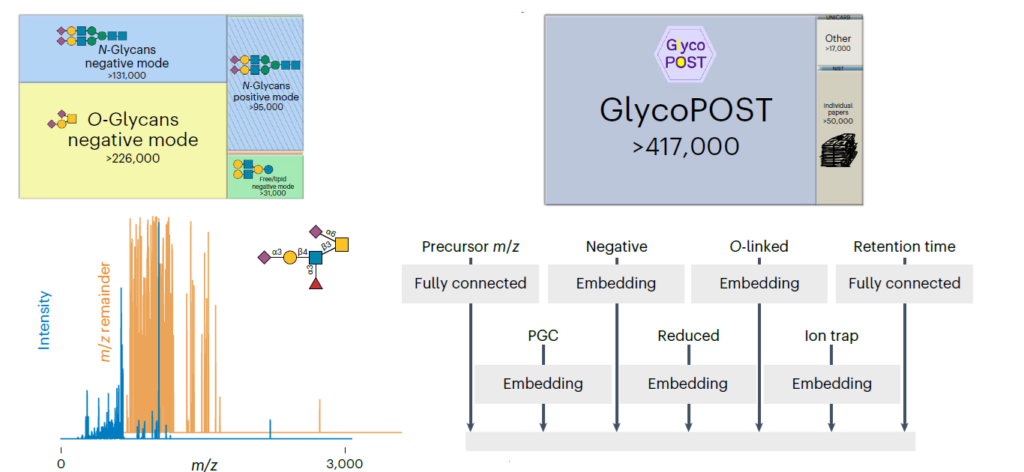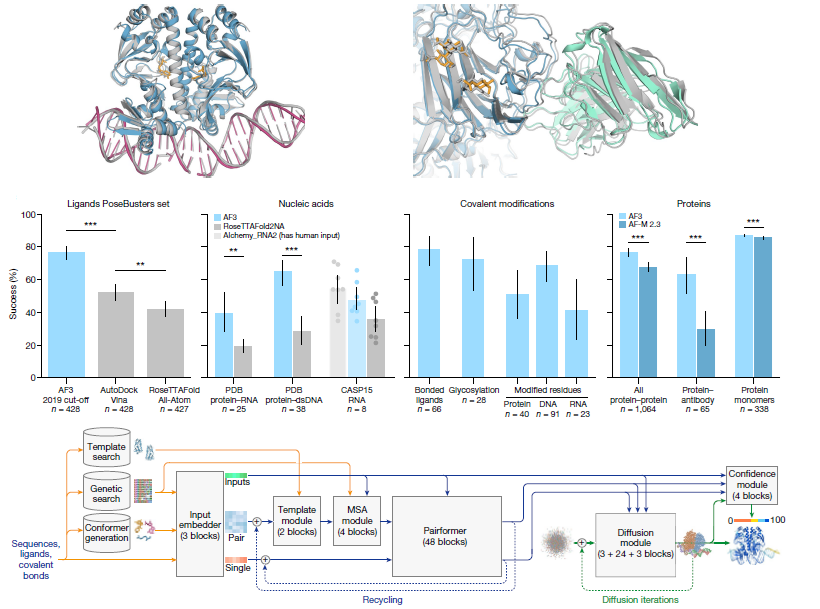Plants emit high rates of methanol, generally assumed to derive from pectin demethylation, and this increases during abiotic stress. In contrast, less is known about the emission and source of acetic acid. The authors of the article used Populus trichocarpa leaves in different developmental stages. Following desiccation of the leaves, they quantified for total methanol and AA emissions together with bulk cell wall acetylation and methylation content. While young leaves showed high emissions of methanol and acetic acid, emissions were reduced in mature and old leaves. In contrast, the ratio of acetic/methanol emissions increased with leaf development mimicking the pattern of O-acetyl/methyl ester ratios of leaf bulk cell walls which is driven by an increase in O-acetyl and decrease in methyl ester content with age.

The results are consistent with methanol and acetic acid emission sources from cell wall de-esterification, with young expanding tissues producing progressively demethyl-esterified and highly methylated pectin. The quantification of acetic acid/methanol emission ratios offers a potential tool for rapid phenotype screening of structural carbohydrate esterification patterns.



